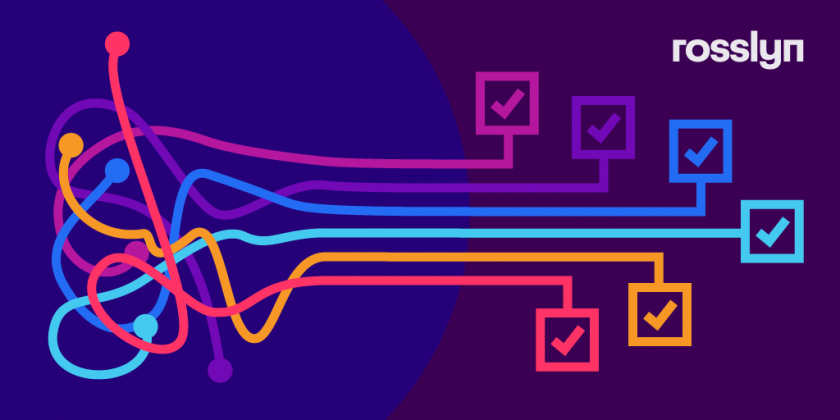How to implement Rosslyn's procurement analytics platform

For 15 years, we’ve been partnering with procurement teams in their pursuit of progress.
During that time, we’ve helped a wide variety of businesses achieve their goals by unlocking their data, illuminating the value it possesses, and assisting them in transforming their procurement function into a benefit enabler for their company.
Our ethos of asking ‘what if’ combined with seeking better, more efficient ways of working has led us to the newest upgrade yet to our cloud-based Rosslyn Platform.
This iteration of the Rosslyn Platform is the result of us seeking a simpler way for our customers to extract the truth from complex data.
It now:
- Provides easier access to a single source of truth
- Allows users to tailor their experience for optimal functionality
- Provides an intuitive, easy-to-use interface
- Possesses robust security
- Uses a blend of people and technology to deliver the results you need
Rosslyn has always been the single source of truth, now it’s become easier to find those truths. So, let’s uncover the optimal way to implement it for your business.
Implementation Resources
Your project will be driven by our UK-based project management team, and you’ll be assigned the following project resources:
- Dedicated project manager
- Implementation manager
- Customer success manager
Stages of Implementation
At Rosslyn, we use a SaaS-gated framework for successful implementation.
Our process consists of six gates:
- Gate 0 – Project Definition and Governance
- Gate 1 – Data Extraction and Integration
- Gate 2 – Data Transformation
- Gate 3 – Data Development (if required)
- Gate 4 – Training and Launch
- Gate 5 – Value Realization
Gate 0 – Project Definition and Governance
This stage is fundamental to the delivery of any Rosslyn deployment. It defines the project scope and governance controls to be used throughout implementation.
We’ll hold data-extraction workshops to enable us to understand the source systems in greater detail, evaluate how they’ve been set up and define the best method for extraction.
We’ll also create a project initiation document (PID) which covers:
- Project objectives and timeline
- Critical success factors
- Extraction methods
- Enrichment activities
- Filter settings
- User profiles/roles
- Training requirements
- Data validation
- Project management activities
Gate 1 – Data Extraction
During the data-extraction workshops, we’ll assess your systems and advise on which extraction method is most suitable.
Rosslyn uses a range of methods, from fully-automated tools through to CSV templates or extraction scripts. Our Extract Studio is SAP-certified and works with Oracle, MS Dynamix, and ODBC connections. We provide both online and offline versions of the tool. Online enables end-to-end automation and scheduling for lights-out extraction and refresh.
It can also be installed in an offline mode, providing our clients with control over what and when extracts are completed.
If a source system cannot support this level of automation, Rosslyn can provide template files which can be used to populate the Rosslyn Platform. This puts the emphasis on data collection and mapping onto the client's side, however, due to some of the legacy systems being used it might be the best way to consume this data.
Ultimately, the majority of our clients leverage multiple methods, depending on the source system's age, location and support. Rosslyn will ensure the most efficient method is chosen to ensure accurate and timely data refreshes.
Gate 2 – Data Transformation
Data transformation certifies the collected data is accurate and understandable, and whether it can be improved ahead of launch. During the transformation phase, data from all sources are aggregated together into a single view. This means ensuring data formats are consistent, currencies are understood, and the correct exchange rates are applied for reporting and dimension mapping for filtering.
We’ll send you a data-acceptance document which:
- Outlines logic used by us in loading data onto our platform
- Details any issues found during data acceptance and validation
- Identifies steps to take to correct the data
- Establishes an agreement that the data is fit for purpose
At this stage, the Rosslyn Platform will be open to user profiles in your business.
You’ll need to:
- Validate your data within the application
- Check data against your source system
We’ll provide data-validation guidelines to assist with this.
Gate 3 – Data Development (Optional)
If any development is required as part of the deliverable, we’ll scope it independently scoped and analyze any costs. This may also increase the overall project time.
Gate 4 – Training
We’ll set up users with online training for the administration of our Rosslyn Platform and the use of the reports. There will then be further online training for categorization.
We’ll offer additional training during the implementation stage before it goes live.
We’ll set up your business in the Rosslyn Jira environment so support can be administered when needed.
Gate 5 – Go Live
Throughout the implementation phase your customer success manager will be involved to ensure the project is running smoothly. As the project moves into the go-live phase, their role adjusts to ensure you’re extracting maximum value from your data.
They’ll:
- Conduct weekly catchups
- Share industry best practices
- Update you on the project roadmap
- Assist you in identifying cost-saving opportunities
Setting yourself up for success
Our platform is designed to help you succeed. To get the most out of it:
- Define your critical success factors
- Ready your resources
- Ensure all users are comfortable with the platform
- Communicate all your feedback to us throughout
Prepare properly for launch by following these steps and you’ll be well on your way towards an innovative, benefit-enabling procurement function.